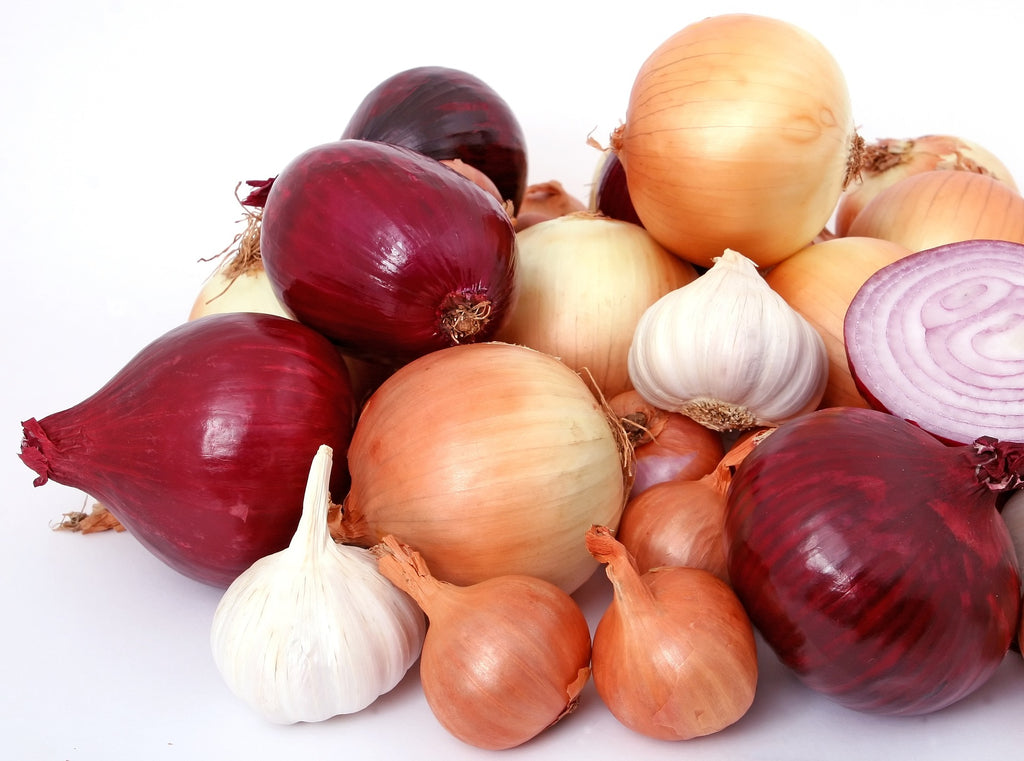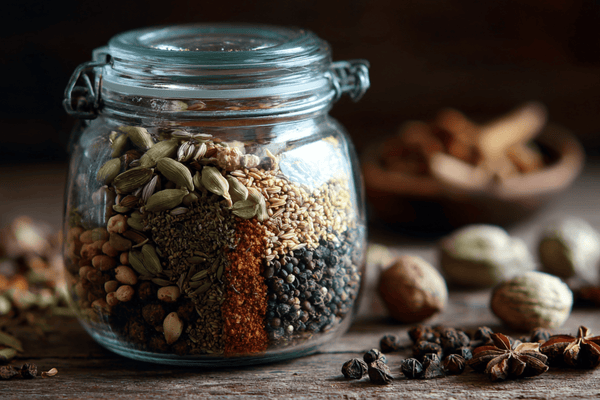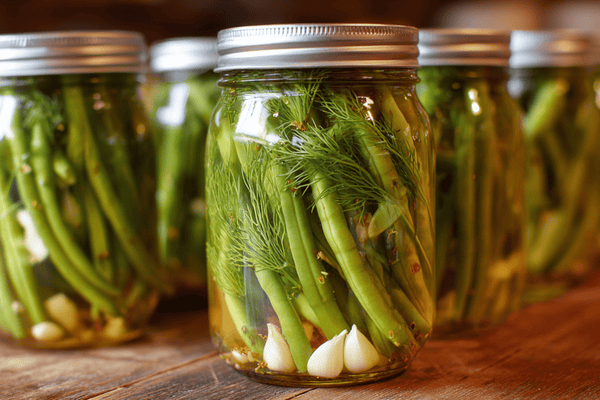
A Japanese chef knife is something that many consider a work of art. They are designed through years of mastery and have the intention of appealing to all five of the human senses.
They are not only designed to be functional but also a joy to use and own and therefore a certain level of pride should be taken for the maintenance of these kitchen staples.
Regular sharpening, polishing, and proper cleaning should be common practice however, there are times when the knife can be neglected and this can eventually lead to rust.
Not only is rust unsightly but it also makes your knife unusable (rust should not be coming into contact with food) and therefore it’s important to know how to remove rust and restore these knives to pristine conditions.
To correctly remove rust from a Japanese chef knife, you should let it sit in a solution of white vinegar or a baking soda paste for 5 - 10 minutes, after which you should wipe down the rusted areas with a cloth or sponge and use steel wool if needed for particularly rusted areas.
You can also use more manual methods to remove rust such as scrubbing it with a rust eraser or on a sharpening stone.
Rust removal from a Japanese chef knife can be a relatively quick and effortless task, depending on how much rust has formed on the blade.
In this article, we are going to cover some of the most common ways to remove rust from a knife and help you to prevent it from forming again in the future.
Table of content
- Why do Knives Rust?
- What is Rust?
- Do stainless steel knives rust?
- Can Japanese Knives Rust?
- Why do Japanese knives rust?
- How to remove rust from Japanese knife
- White Vinegar Solution
- Using Baking Soda for rust removal
- Using a Potato To Remove Rust From A Japanese Knife
- Use Onions To Remove Rust From A Japanese Knife
- Rust Eraser
- Using a Sharpening Stone for a stainless steel knife
- Steel wool
- Re-sharpen the Blade
- FAQ
- Final Thoughts
Why do Knives Rust?
When it comes to knife care, prevention is always the best option over correction when it comes to rust.
To know how to prevent a knife from rusting, it’s important to know why your knives can rust when subjected to certain environments.
You might also be thinking “well, I have a stainless steel knife so this surely doesn’t apply to me?”. Unfortunately, it is only stain-less and not stain-free, and therefore unless you have a ceramic knife, your still blade will be susceptible to rust.
Rust, the orange flakey and gritty material that you might find on metal, is the outcome of a chemical reaction known as iron oxidation.
This is the process whereby iron reacts with air and water to form what is more commonly known as rust.
A steel knife is formed from iron and therefore anytime your knife is subjected to water and air for a prolonged period of time it will become susceptible to rust.
This process is not instantaneous, however, if you leave water on a knife for a long enough period then you will eventually see rust start to form and yes, this is even true for stainless steel knives.
What is Rust?
Rust comes from the oxidation of iron and happens when metal contacts the water for a longer time. Iron can't harm us, rather it's necessary.
If it was a problem with the blades causing the rust, it was important to learn more about it.
Many of the articles we wrote have been helpful in storing your kitchen tools in their best condition and have helped you to determine the best safest methods to store them based upon your requirements. We're going to talk about rust.
Do stainless steel knives rust?
If you leave water on a knife for a long enough period then you will eventually see rust start to form and yes, this is even true for stainless steel knives.
Rust comes from the oxidation of iron and happens when metal contacts the water for a longer time.
A stainless steel knife is formed from iron and therefore anytime your knife is subjected to water and air for a prolonged period of time it will become susceptible to rust. Stainless steel knives can get rust too, and it's important to know how to remove it.
Can Japanese Knives Rust?
The answer to the question “Can Japanese knives rust?” is a resounding yes. All knives, including your prized Japanese knife, can rust when a Damascus blade is exposed to the right elements for long enough periods of time.
In order to learn how to prevent and correct this from happening, it’s important that you understand why your knives can rust and what you can do to stop this from occurring.
Why do Japanese knives rust?
There are many reasons why your Damascus steel knife can rust, but the two main factors that contribute to this problem include moisture and air contact.
Since we already know that water is key in allowing for iron oxidation to occur, it’s important to note whether your knife is susceptible to rusting when it comes in contact with moisture.
To prevent rust from forming on your blade, it’s important that you ensure no water or moisture of any kind gets into the knife.
Under no circumstance should you leave your Japanese knives lying around in a wet area where they can come into contact with water and air.
How to remove rust from Japanese knife
So you may ask yourself how to remove rust from a Damascus knife? well, When it comes to removing rust from a Japanese knife, there are a few options available to you, and these range from standard home remedies to specially made rust removers.
In this section, we are going to run through some of the best ways that you can protect your knife.
In our opinion, there is not one single best method for removing rust from Damascus steel, and the method you choose will depend on how bad the rust actually is.
The key thing that we want to point out is that you shouldn’t use a chemical cleaning solution to try and remove the rust, as this can be detrimental to knife health as well as the potential to contaminate any food that you prepare after use.
Note - you can also use a combination of these methods depending on how much rust is on the knife.
White Vinegar Solution

One option for restoring a Japanese knife is to use white vinegar (or apple cider vinegar) is the most popular and easiest form of rust removal for a slightly rusted knife.
It will work with heavily rusted knives but it may require multiple applications to break down more substantial levels of rust.
Simply submerge the blade of your knife in white vinegar (some recommend warm white vinegar) into a tall glass or plastic cup for 5 minutes.
The acetic acid will attach the rust and start to break it down, just ensure that if you have a wooden handle on your knife you only submerge the blade into the vinegar.
After 5 minutes wipe down the blade with a cloth, sponge, toothbrush, or steel wool to easily remove the rust from the blade. Rinse again and then dry the blade.
Using Baking Soda for rust removal

Baking soda uses a similar approach to the white vinegar, mix baking soda with water to create baking soda paste, and apply this to the knife blade in the areas affected by rust. Leave the knife to sit on a kitchen towel for up to an hour and then scrub the knife with a toothbrush or steel wool and finally rinse the knife clean.
If there are some persistent areas of rust, use the same paste and apply it to the toothbrush to then scrub these stubborn areas. Rinse the knife clean and dry it for a smooth finish.
Using a Potato To Remove Rust From A Japanese Knife

The potato is one of the best natural rust removal methods.
The rust on the blade may appear small and can be considered lighter rust, but you can use the potato techniques best for removal on particularly rusty blades.
Cut potatoes in half and wash potatoes with dish soap. Rub the potato slice against the crack with the knife. Potatoes contain oxalic acids that help disintegrate metal rust.
If it seems like rust is stubborn, sprinkle baking powder onto the cutting edge of the potato once the liquid has been wiped off the surface.
Use Onions To Remove Rust From A Japanese Knife

Onions have fewer acids than potatoes and is also useful for light rusts that the potato method cannot remove.
Slice onion horizontally and rub the sliced onion with the cutting knife over the rust marks. Then use pressure to work onions into rusted areas to break up acids.
You should lay your knife on the floor while gently brushing onions onto the surface. Having onions in your hand will be safer. It may be necessary to add some fine ground salt to a cut onion to make it abrasive.
Rust Eraser

A rust eraser is a popular product that can be used to remove small levels or rust and can be used effectively in conjunction with a sharpening stone.
These rust erasers are essentially small sharpening stones with varying grades of grit that will remove rust with a more manual, ‘elbow grease’ approach.
These are perfect for getting into awkward areas like the spine or edge of the blade and a fine grit of around 1000 - 3000 grade will be ideal for tackling hard to remove rust.
For this method, you can again use the white vinegar solution to either soak or coat the knife, leave it for a few minutes to activate, and then scrub the blade with the rust eraser.
Steel wool
Steel Wool comes in different grades, the coarser the grade of steel wool works well on heavier rust damage. For light rust or when you are touching up your edge after sharpening, use the finer-grade steel wool. neven Steel Wools Be sure to use steel wool that is meant for stainless steel. If you use metal with too high of carbon content, it can cause further damage and discoloration blemishes!
Using a Sharpening Stone for a stainless steel knife

Using a sharpening stone is arguably the most efficient way to remove rust from a knife however this is also the most abrasive and requires a much higher level of skill and knife control.
A sharpening stone is used to remove layers of steel to form an edge typically and therefore it can perform a similar function when you are looking to remove layers of rust.
This method is best for blades that have rust forming around the edge of the blade as the process is similar to simply sharpening your knife on the whetstone.
If however, the rust is formed around the spine or either side of the knife then this can be much trickier to remove using a sharpening stone, and in these situations,
we’d recommend using a solution above with a sponge or steel wool to remove rust from these more awkward areas.
Re-sharpen the Blade

Regardless of which step you take from the above, it’s worth noting that after any sort of rust removal you will then need to resharpen the knife-edge afterward.
This is because some of these techniques can be quite abrasive and your knife edge will likely become dull in the process.
Therefore, an important part of the rust removal process will always be to sharpen your knife as the final step to reform the edge and ensure that it’s in optimal working condition.
More details on how to correctly sharpen your knives can be found in 'How to Correctly Sharpen vg10 Japanese Knives'.
FAQ
Q: How can I remove rust from a Japanese chef knife?
A: Removing rust from a Japanese chef knife requires careful attention and proper technique. Here are the steps to correctly remove rust from your knife:
-
Assess the extent of the rust: Determine how severe the rust is on the blade. If it's minor surface rust, you can typically remove it yourself. However, deep or extensive rust may require professional help.
-
Prepare a rust removal solution: Create a solution by mixing equal parts of water and vinegar or lemon juice. Alternatively, you can use a commercial rust remover specifically designed for knives.
-
Apply the solution: Dip a cloth or sponge into the solution and gently rub it onto the rusted areas of the knife. Make sure to cover the entire affected area.
-
Let it sit: Allow the solution to sit on the rusted areas for a few minutes. This helps to break down and dissolve the rust.
-
Scrub gently: Using a non-abrasive scrub pad or a soft-bristle toothbrush, gently scrub the rusted areas in a circular motion. Be careful not to apply excessive pressure that can scratch the blade.
-
Rinse and dry: Thoroughly rinse the knife with water to remove the rust remover solution. Dry the blade immediately with a clean towel to prevent moisture from causing further rust.
-
Apply oil: After removing the rust, it's important to protect the knife from future rusting. Apply a thin layer of food-grade mineral oil or knife oil to the blade. This helps to create a protective barrier against moisture.
Q: Can I use other substances to remove rust from my Japanese chef knife?
A: While there are alternative methods using substances like baking soda or rust erasers, it's generally recommended to stick with milder solutions like water and vinegar or commercial rust removers. Harsh abrasives or chemicals can damage the blade's finish and potentially alter its performance.
Q: How can I prevent rust from forming on my Japanese chef knife?
A: Preventing rust is essential for maintaining the quality of your Japanese chef knife. Here are some tips to help prevent rust:
-
Clean and dry your knife after each use: After using the knife, wash it by hand with mild soap and warm water. Dry it immediately with a clean towel to remove any moisture.
-
Avoid soaking the knife: Extended exposure to water can promote rust formation. Avoid leaving your knife soaking in the sink or water for extended periods.
-
Store the knife properly: Store your knife in a dry and well-ventilated area. Consider using a knife block, a magnetic strip, or a knife sheath to protect the blade from moisture and physical damage.
-
Apply a protective coating: Regularly apply a thin layer of food-grade mineral oil or knife oil to the blade. This helps create a barrier against moisture and prevents rust formation.
-
Avoid corrosive environments: Keep your knife away from corrosive substances, such as acidic foods or harsh cleaning chemicals.
By following these preventive measures, you can significantly reduce the risk of rust forming on your Japanese chef knife and ensure its long-term durability.
Final Thoughts
Whether you have neglected your knives slightly and allowed some rust to build up or you’ve come across a bargain-priced knife that could be a premium tool once cleaned up, it’s good to note that rust removal is quick and easy.
If you follow some of the steps we laid out above, it can take as little as 10 minutes (depending on how bad it is), and will see your blade looking brand new.
Just make sure that once the rust is correctly removed that you then follow some basic maintenance steps to prevent rust in the future.
These steps include regular honing and sharpening of the edge, ensuring you hand dry the knife after cleaning so that it doesn’t air dry, and finally storing the knife in a dry environment that’s free from moisture.



